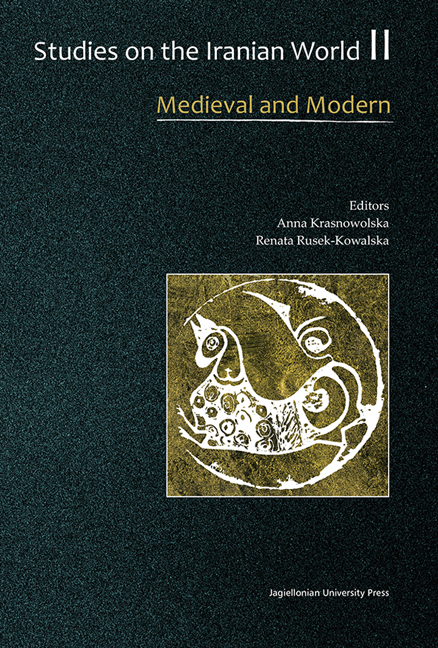Book contents
- Frontmatter
- Contents
- Foreword
- Linguistics
- Literature
- Religion
- History
- Arts
- Social and Cultural Studies
- Amulets and Medical Cures in the Yaghnob Valley: an Overview of Yaghnobi Traditional Medicine between Magic and Healing Folklore
- Persian Cookbooks, the ‘Myth’ of National Cuisine and the Process of Modernisation
- Modernity and Fertility Decline in Iran
- Medicine and Anthropology: the ‘Ambassador-Physician’ Jacob Eduard Polak (1818–1891) as a Mediator of Modernity in Iran
- Anatomy and Therapy of Eye-Diseases in Esmā῾īl Gorgānī Compared to Syriac Sources
- The Trans-Iranian Railway – History and Socio-Political Implications
- Traditional Diet and Allopathic Medicine in Diagnosis and Treatment in Iran
Modernity and Fertility Decline in Iran
from Social and Cultural Studies
Published online by Cambridge University Press: 12 January 2018
- Frontmatter
- Contents
- Foreword
- Linguistics
- Literature
- Religion
- History
- Arts
- Social and Cultural Studies
- Amulets and Medical Cures in the Yaghnob Valley: an Overview of Yaghnobi Traditional Medicine between Magic and Healing Folklore
- Persian Cookbooks, the ‘Myth’ of National Cuisine and the Process of Modernisation
- Modernity and Fertility Decline in Iran
- Medicine and Anthropology: the ‘Ambassador-Physician’ Jacob Eduard Polak (1818–1891) as a Mediator of Modernity in Iran
- Anatomy and Therapy of Eye-Diseases in Esmā῾īl Gorgānī Compared to Syriac Sources
- The Trans-Iranian Railway – History and Socio-Political Implications
- Traditional Diet and Allopathic Medicine in Diagnosis and Treatment in Iran
Summary
SUMMARY
Placing fertility and birth rates in Iran within the paradigm of modernity and its social consequences deconstructs the myth of an Iranian demographic singularity in fertility behavior. A critical look at some common, unreflected categories used in the literature to define fertility changes, i.e., infant mortality, women's marriage age, education and employment, identifies the recent steep drop of the birthrate in Iran as a logical consequence of profound social changes over the past fifty years that are rooted in ideas and trends starting in the 19th century. With knowledge gained through ethnographic research in Iran I demonstrate how ethnographic insights into the ideational basis of fertility behavior deepen the understanding of complex socio-economic and cultural processes that astonish scholars who work with correlations based on quantitative data.
INTRODUCTION
One of the few recent developments in Iran with a positive echo in the global press is the so-called ‘miracle’ of the recent rapid decline in the fertility rate. The miracle thesis says that nowhere has the birthrate dropped as fast as in the Islamic Republic, and this without heavy-handed government interference or heated speeches from podium and pulpit. Governmental sanctions were soft. For example, people found ways to circumvent the threat of a cut in health care benefits and raise in hospital birthing fees for any child after the third per family. The motivation to limit family size was not governmental force but facilitation of what people called ‘reasonable’ decisions and common sense. Like miracles in general, this demographic one is easier to describe than to explain.
The literature on this social phenomenon in Iran is rich on statistics and correlations but short on explanations, and shorter yet on socio-cultural frames in which this drastic drop makes sense. As the anthropological/ethnographic view is largely missing in the literature, I aim to sketch here the parameters for fertility dynamics in Iran that Agnes Loeffler and I have noted during our accumulated decade of residence in Iran between 1965 and 2006. Loeffler's main work was on medical topics in Shiraz; mine was ethnographic fieldwork mostly in the tribal province of Boir Ahmad, southwest Iran. We used standard qualitative ethnographic methodologies, including observations and discussions in health clinics.
- Type
- Chapter
- Information
- Studies on the Iranian WorldMedieval and Modern, pp. 319 - 328Publisher: Jagiellonian University PressPrint publication year: 2015



